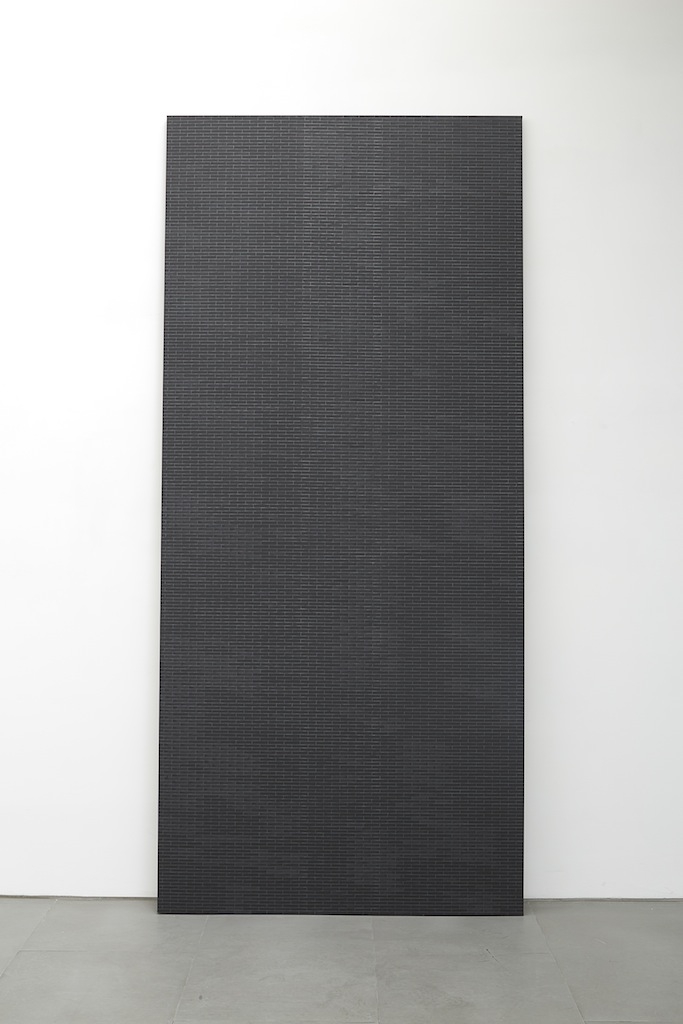Selected by Lauren Cornell
Time is material in Maria Taniguchi’s large-scale acrylic paintings, each one composed of hundreds of small painted rectangles, in a brick-wall pattern. The artist outlines the gridded composition onto the canvas before painting one brick at a time, over a period of months. On first sight of Taniguchi’s works, this writer made a connection between her strict, meditative process and the series I AM STILL ALIVE (1970–2000) by Japanese conceptual artist On Kawara, consisting of 900 telegrams sent to friends and colleagues over three decades, all of which carried the succinct titular message. I AM STILL ALIVE is darker in tone than Taniguchi’s more physically demanding work – On Kawara could, in fact, have been dead by the time the telegram was received – but the burying of emotion, story and personal detail in an obsessive act, runs parallel in both artists’s work, as does their pairing of the artistic process with the bare fact of living. Of her paintings, Taniguchi has said: ‘People look at these works and see abstract pictures, but in reality they serve a very practical purpose… [they] take time and help me regulate my own production, my thinking. They set the tone for the rest of my work.’
The tone in the rest of Taniguchi’s work, which includes video, sculpture and installation, is similarly poetic and languid. The single-channel, black-and-white video that is part of the work Figure Study (2012), shows a pan around two workers digging in a thick, lush jungle, catching light as it passes over their arms and faces, with the sound of the wind rustling through the leaves; this long, uneventful take ultimately reveals that they are digging for clay. The video is accompanied by two clay slabs, the same size as the video monitor, a connection that suggests a collapse of material distinctions between them. Taniguchi is attuned to the details of how art is made. Her works address not only how art is fabricated in-studio, but also how its materials are sourced, how it is preserved and recreated. And yet each of her works seems transcendent, capturing moments that would otherwise be fleeting or ignored.
Maria Taniguchi was born in Dumaguete in the Philippines and lives and works in Manila. She is currently participating in the 8th Asia Pacific Triennial of Contemporary Art, through 10 April 2016, and is the winner of the 2015 Hugo Boss Asia Art Award.
This article was first published in the January & February 2016 issue of ArtReview.
